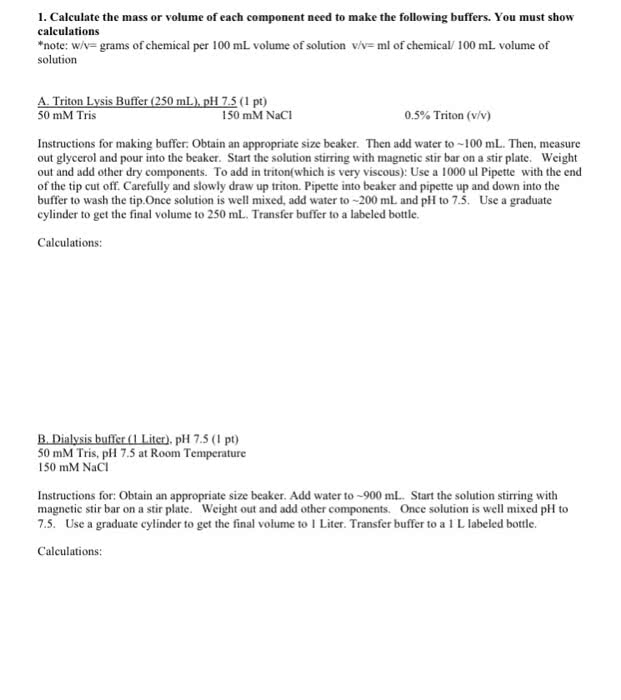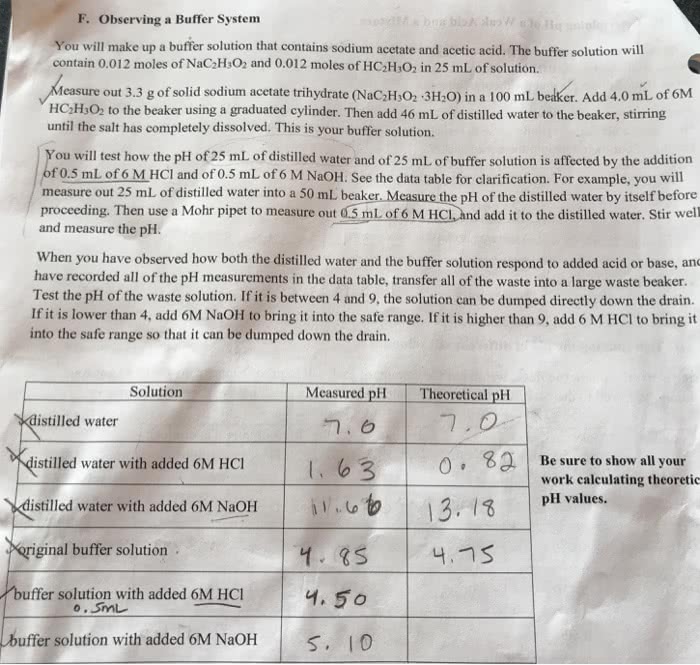Prepare your solvent, which will be a 1.0 M Metal Free HCl solution. First, calculate the volume of the concentrated acid necessary to prepare 600.0 mL of 1.0 M HCL. (I believe we are give 3 M HCl to dilute here). Put about 300 mL of DIW in your 800 mL beaker, and then VERY carefully add the calculated volume of concentrated HCl to the water. YOU SHOULD ALWAYS ADD ACID TO WATER, NOT THE OTHER WAY AROUND. Do not pour the acid from the large bottle into your graduate cylinder; instead pour it first into a beaker then pour from the beaker into your graduated cylinder. After adding the acid, fill the beaker to ~600 mL and then transfer your solution into your 1.0 L stoppered bottle and label the bottle. You will use this solvent for the next two weeks.
Prepare a calcium standard solution by accurately weighing between 0.35 - 0.40 g (I'm using .38 specifically) of standard calcium carbonate and quantitatively transferring the solid to a 250 mL beaker. Slowly add dropwise 6 M HCl until the sample stops effervescing and completely dissolves. Make the volume up to about 50 mL with DIW. Quantitatively transfer the solution into a 250 mL volumetric and dilute to the mark. Mix the solution carefully. Calculate the concentration of the Ca2+ in ppm (or mg/L) using the correct number of significant figures assuming the 1.0 HCl has a density of 1.000 g/mL. Show these calculations clearly in your notebook and on your report form. Recall that calcium is only ~40% of the CaCO3.
Prepare your solvent, which will be a 1.0 M Metal Free HCl solution. First, calculate the volume of the concentrated acid necessary to prepare 600.0 mL of 1.0 M HCL. (I believe we are give 3 M HCl to dilute here). Put about 300 mL of DIW in your 800 mL beaker, and then VERY carefully add the calculated volume of concentrated HCl to the water. YOU SHOULD ALWAYS ADD ACID TO WATER, NOT THE OTHER WAY AROUND. Do not pour the acid from the large bottle into your graduate cylinder; instead pour it first into a beaker then pour from the beaker into your graduated cylinder. After adding the acid, fill the beaker to ~600 mL and then transfer your solution into your 1.0 L stoppered bottle and label the bottle. You will use this solvent for the next two weeks.
Prepare a calcium standard solution by accurately weighing between 0.35 - 0.40 g (I'm using .38 specifically) of standard calcium carbonate and quantitatively transferring the solid to a 250 mL beaker. Slowly add dropwise 6 M HCl until the sample stops effervescing and completely dissolves. Make the volume up to about 50 mL with DIW. Quantitatively transfer the solution into a 250 mL volumetric and dilute to the mark. Mix the solution carefully. Calculate the concentration of the Ca2+ in ppm (or mg/L) using the correct number of significant figures assuming the 1.0 HCl has a density of 1.000 g/mL. Show these calculations clearly in your notebook and on your report form. Recall that calcium is only ~40% of the CaCO3.


